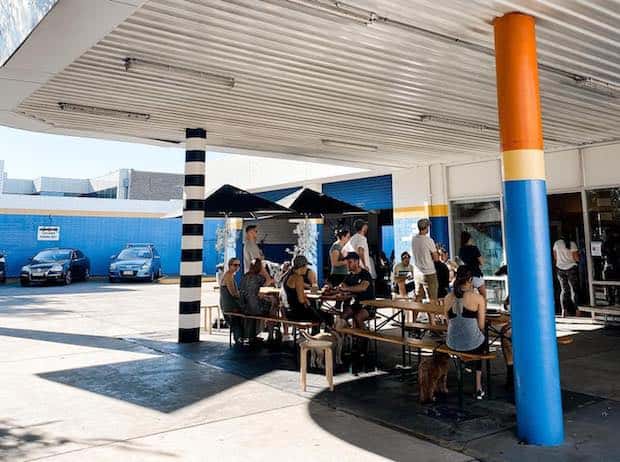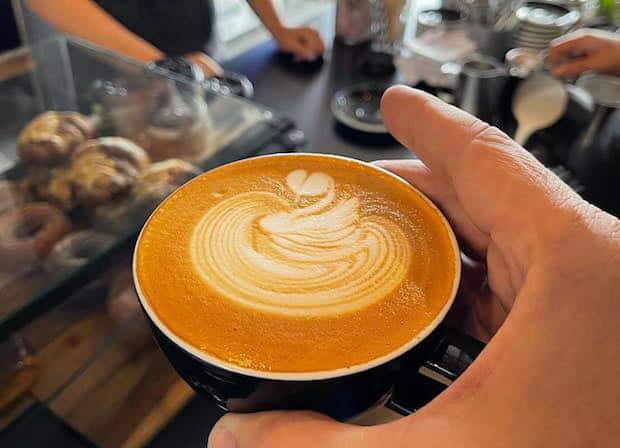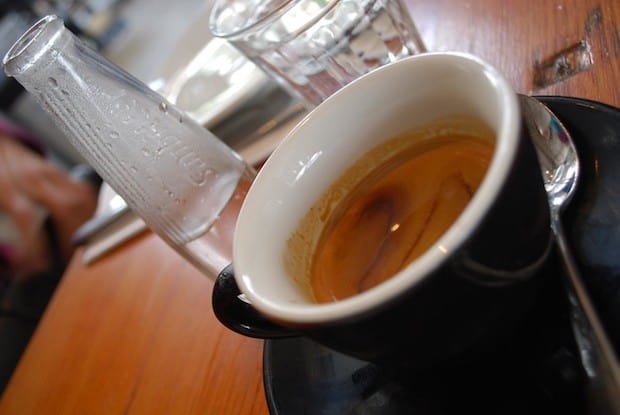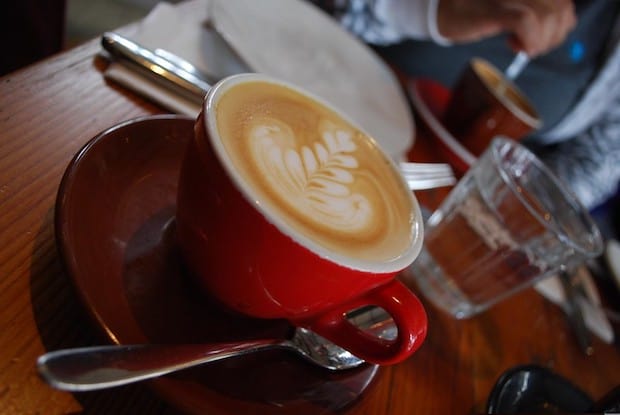Last Updated on December 8, 2023
Does Australia have the best coffee in the world? The Aussies would say so.
Australia has certainly found the perfect balance of coffee quality and coffee culture, with some of the best baristas in the world. A dogged obsession with product and presentation, paired with the laid back yet modern style of Australian cafes is an inviting combination that has been emulated by coffee cultures around the world.
If you have a hip artisanal coffee shop in your neighborhood, it was likely inspired at some point by the Australian model, whether they’re aware of it or not.
View this post on Instagram
History of Australian coffee culture
Coffee was first introduced into mainstream Australian culture in the 1920s with an influx of Russian refugees, some of whom opened small shops selling coffee beans for home use. It was a wave of Italian immigrants after the Second World War, however, that inspired the current style of cafe culture throughout Australia. The Italians brought not only their espresso machines—including the Gaggia piston-driven commercial machine—but also their passion for the community-centred culture of the cafe itself.
Australians embraced the romantic Italian cafe culture, but without the shackles of history and tradition they were free to evolve and advance as new products and trends appeared.
The 1956 Olympics reinforced cafes as cultural hubs, and they became central to the nightlife of Australian bohemians.
Cafes remain vital to the current social fabric, and they’ve developed a quality and refinement that is now being imitated around the world.
Current Australian coffee culture
Aussies take their coffee seriously, but the experience is laid back. As an island nation, they have a do-it-yourself attitude that has driven the cafe and restaurant scene in Australia to use whatever is available locally.
Coffee was first cultivated in Australia in the late 1800s, but production waned and the market lost relevance until the rise of coffee culture around the globe in the 1980s and 90s. Producing primarily high-quality Arabica beans, on a relatively small scale, home-grown beans from the far north of Queensland are perfectly suited to Australia’s quality coffee culture. Most high-end cafes will feature local beans roasted lightly to preserve the subtle, fruity notes typical of the region. Most cafes will also feature locally sourced breakfast plates, with a focus on healthy options and local fresh produce.
Aussies don’t suffer bad coffee, and they’ll often pass up a nearby cafe and instead travel a great distance for their morning coffee at their favorite cafe. That also means sub-standard coffee shops don’t stand a chance, and why global chains have never been able to gain a foothold. Starbucks closed 60 of their 84 Australian locations in 2008, after suffering severe losses, and 95 per cent of Australian shops are independent cafes. This inspires a competitive scene that drives coffee excellence across the country. A great Australian cafe is more than just excellent coffee, it’s about quality time with friends and fuelling up on caffeine before hitting the surf.

Cultural contributions
Aussies (and arguably Kiwis as well) were instrumental in bringing their independent and refined style of cafe to North America and the U.K. Parts of Europe remain mired in their own traditions around coffee consumption, but Americans were eager to expand and refine their cafe culture. Many Aussie-inspired and Aussie-run cafes have popped up in major cities across the U.S.
Bringing the Australian cafe to the U.S.
Aussie ex-pat Nick Stone brought his quintessential charming customer service experience and refined style stateside with his wildly successful Bluestone Lane cafes.
View this post on Instagram
Stone wanted to challenge the “coffee and work” mentality he saw in North American cafes, and endeavored to get heads out of laptops and engaged with one another. He brought the Aussie style of “coffee and chill” from his island nation to the island city of Manhattan in 2010, and has since expanded Bluestone Lane’s philosophy throughout New York and Philadelphia.
Amy Cohen and Hayden Barnie followed suit, opening their Aussie/Kiwi inspired Stowaway Coffee + Kitchen in Denver in 2016. They believe the unique challenges associated with operating on an island nation inspire a DIY-with-what-you’ve-got-locally attitude that contributes to the independent spirit of both Australian and New Zealand coffee shops. They brought that story with them across the pond.
View this post on Instagram
Stowaway’s style and values are well aligned with the current slow food movement, with increasing demand for supply-chain transparency, locally sourced products, and an overall sustainable approach within the food and beverage industry.
Perhaps even more ubiquitous than Australian-style cafes themselves is the proliferation of the “flat white.” The flat white is well traveled and you can now order one nearly anywhere in the world, but a great one can be slightly more elusive.

It seems simple enough—two espresso shots with steamed milk and foam—but the technique is of utmost importance. Getting a smooth, silky microfoam is the key to a proper flat white, and where it gets its name. It’s shorter and stronger than a latte, and if done well the foam will be so smooth it appears flat.
Top cafes around the world have mastered this now widely popular drink, but I would bet the best flat white would still be found in its home country.
Etiquette
Just relax, mate. The Australian cafe scene is far less about what you order or when, and much more about how you enjoy it. Aussies tend toward the simple when it comes to their coffee drinks, but they’re happy to make you whatever you like.
Take your time
Taking your coffee on the run is frowned upon, and you’ll find the locals enjoying a long hot breakfast and perfect coffee with friends, particularly on the weekends, often followed by a surf, or other beach-related activities.
So sit back and relax, and enjoy the MANY amazing cafes where you’ll find some of the best coffee in the world, as well as healthy and delicious breakfast plates, and likely a new surf pal or two.
What to order
Keep it simple. Not only will you fit in among the locals, but in a country where coffee is handled with such skill and precision, you’ll want to enjoy it in an unadulterated form. Australians favor espresso coffee drinks, with or without milk, and you’ll rarely find drip coffee. Most preparations are stronger than typical North American offerings, so keep that in mind when ordering.
A long black—a double espresso with hot water—is quite common. It’s different than an americano in both preparation and style. It is much shorter and stronger, and the espresso is poured onto the hot water to retain the rich crema (how a good americano should be made, but they often aren’t).

A straight-up espresso is still a great option as well, but if you prefer a touch of dilution, the long black is a great go-to. If it’s still too strong for you, more hot water can be added without much fuss.
Of course, you need to have a flat white at some point. We’ve already gone into detail on what makes this such a popular drink, and you would be remiss not to try one in its place of origin. It will likely be the best flat white you’ll ever have.
The latte and cappuccino are popular as well, and they will be made with care and precision, so you’ll certainly find whatever your heart desires.
Final thoughts
As Muhammad Ali famously said, “it’s not bragging if you can back it up.” Aussie coffee culture might be short on modesty, but they’ve got the chops to deliver. The coffee scene is so darn good that Starbucks couldn’t even compete. You’ll find top-notch cafes on practically every corner, and when your exquisite cup of coffee is paired with a delicious, locally sourced breakfast and followed by a day at a breathtaking beach, you can certainly see what the fuss is about.
Image at top: © Alpha | Creative Commons


